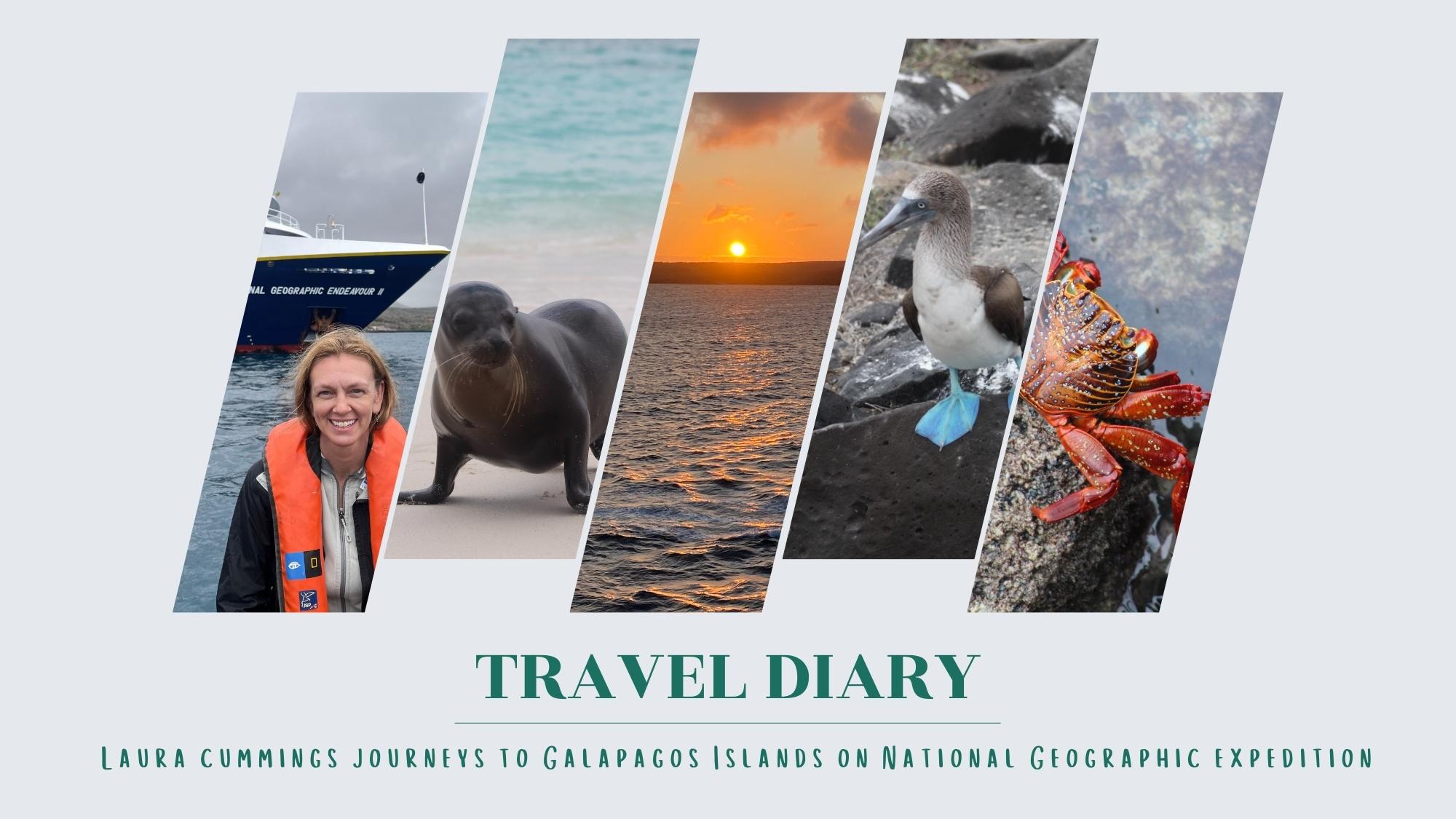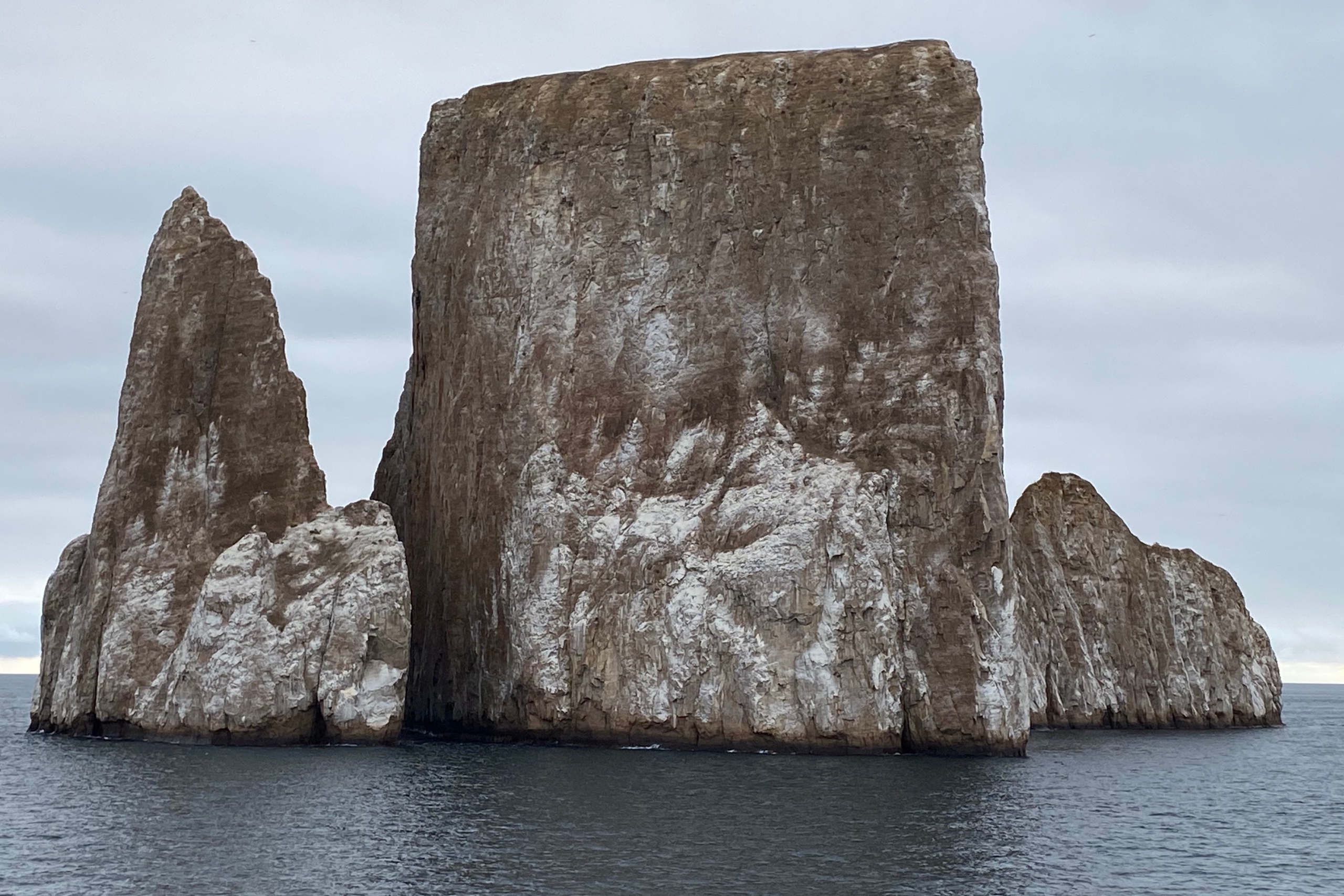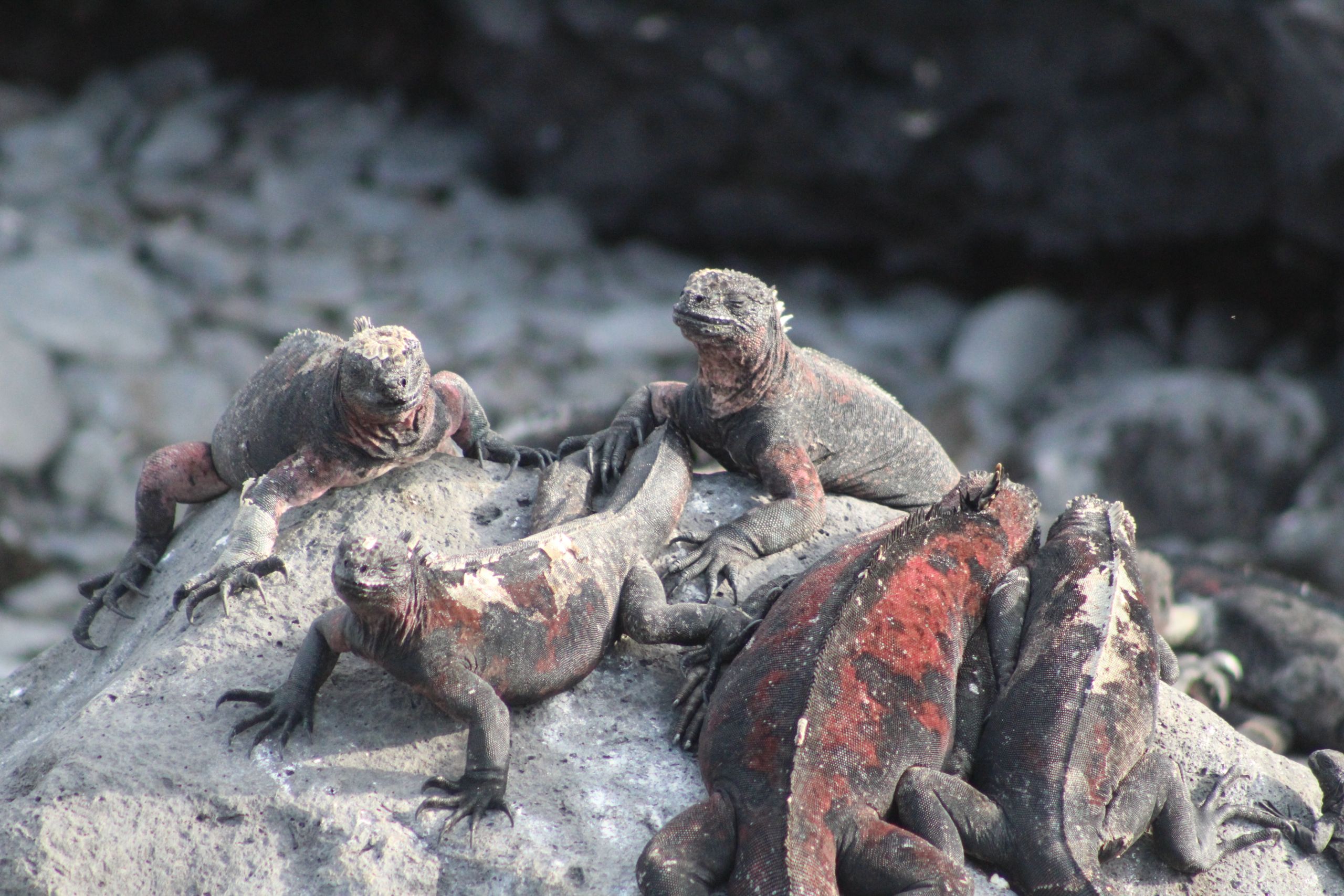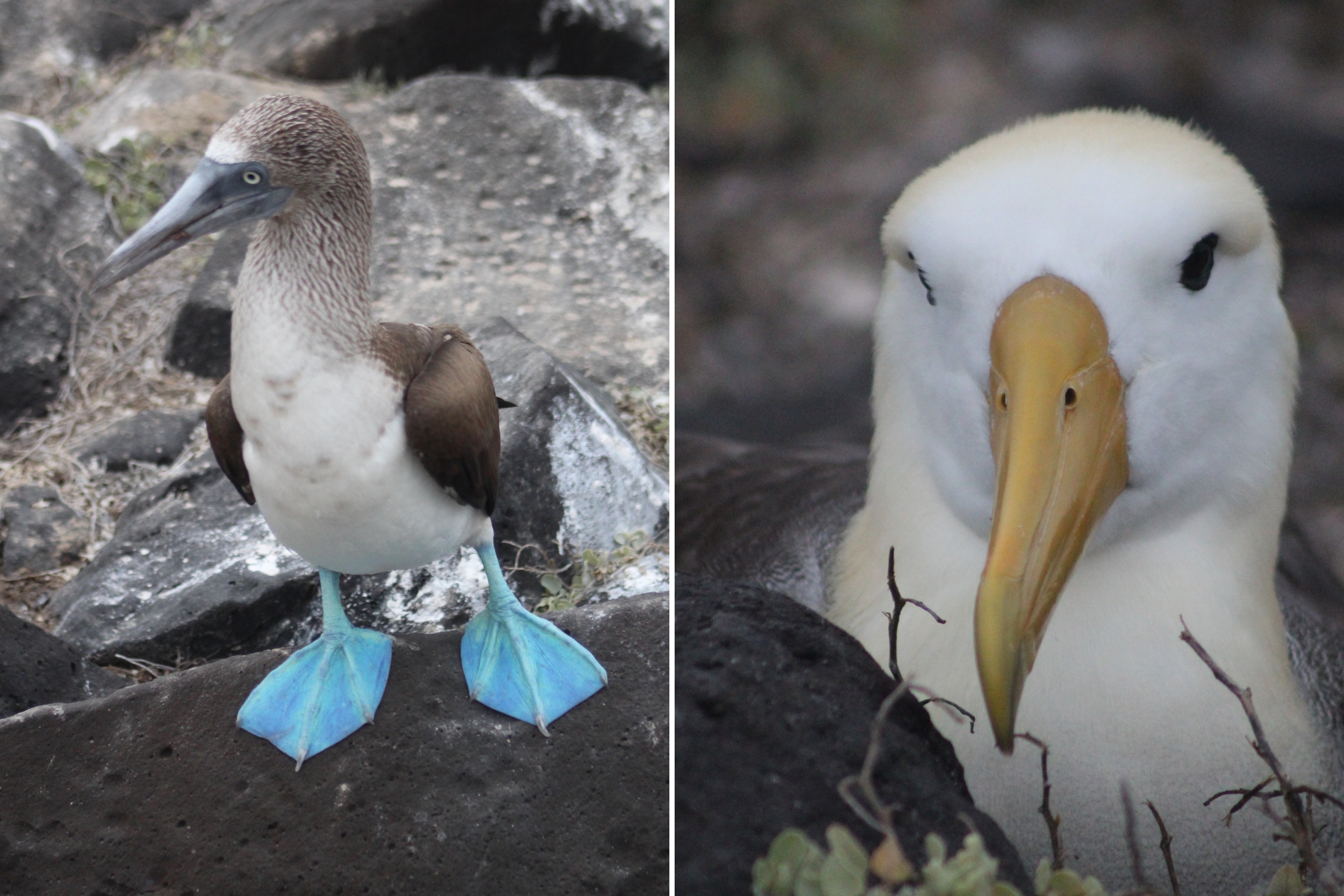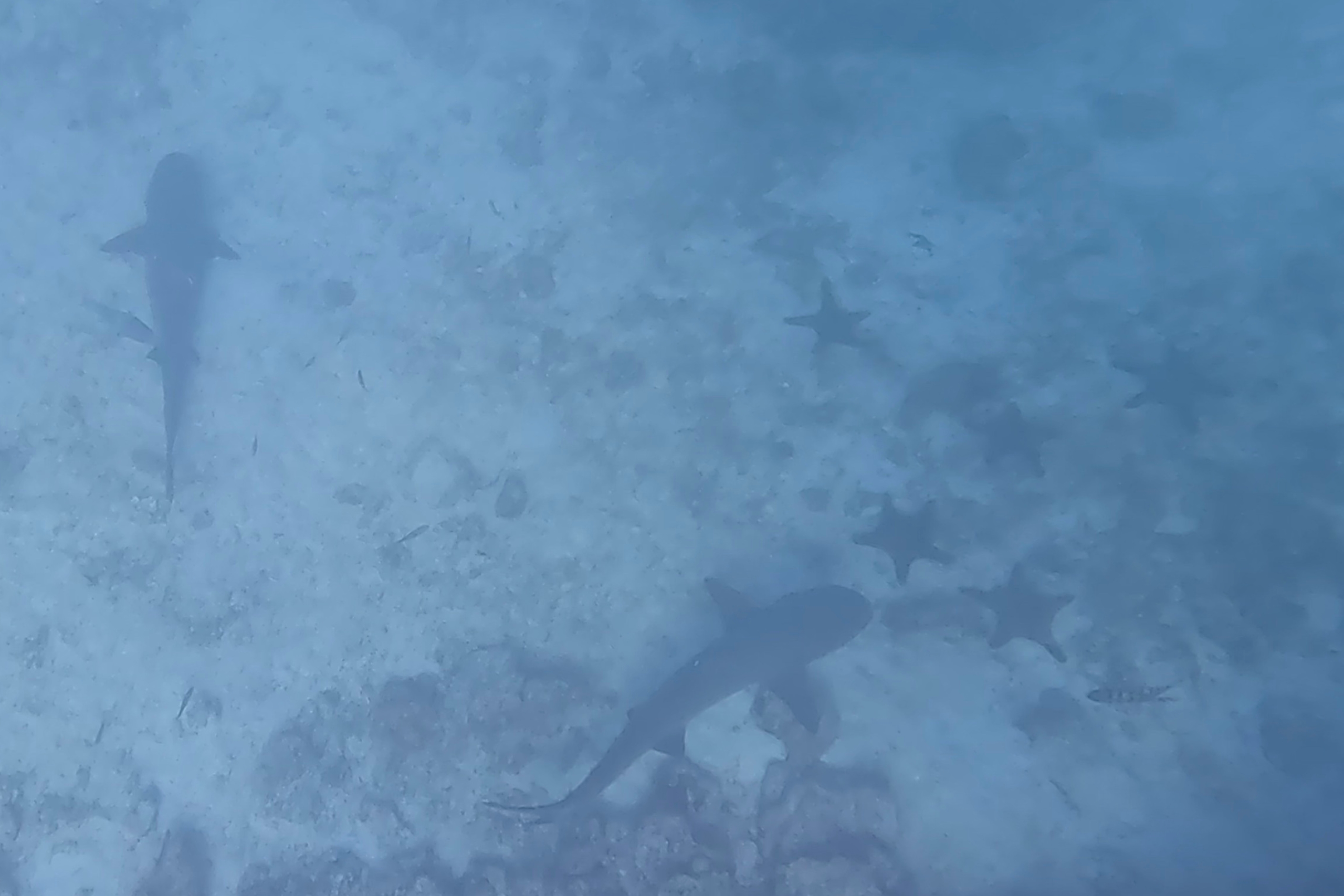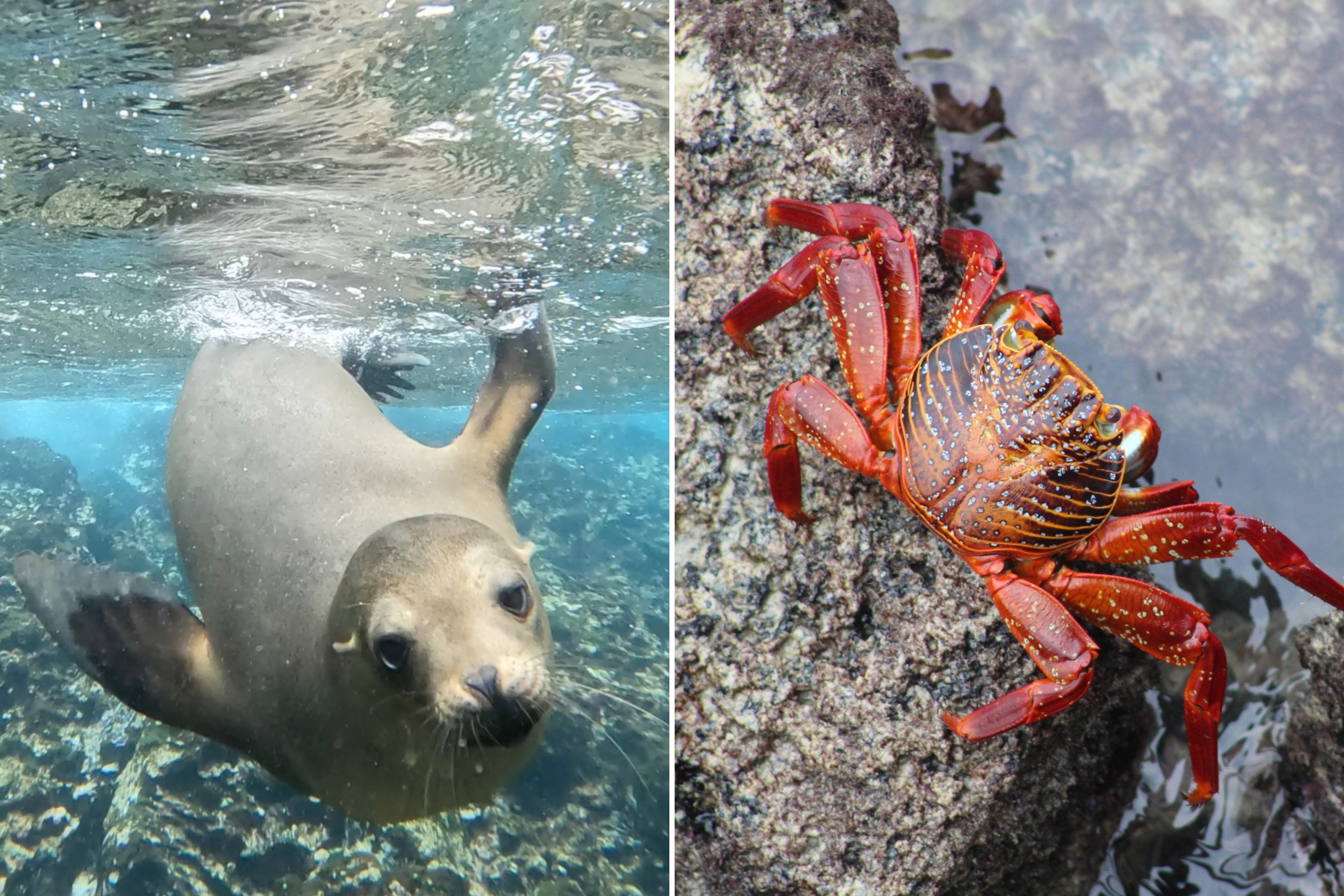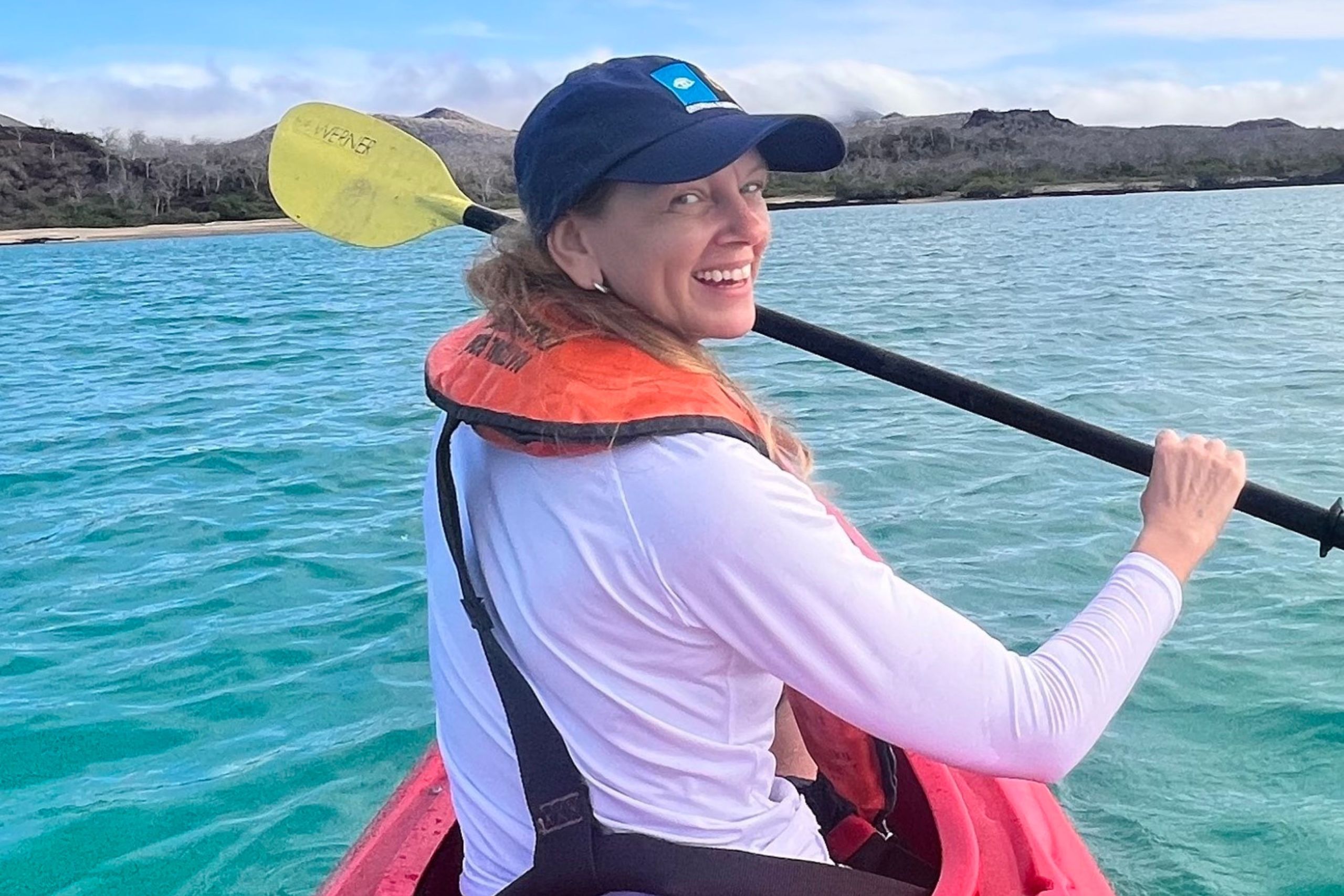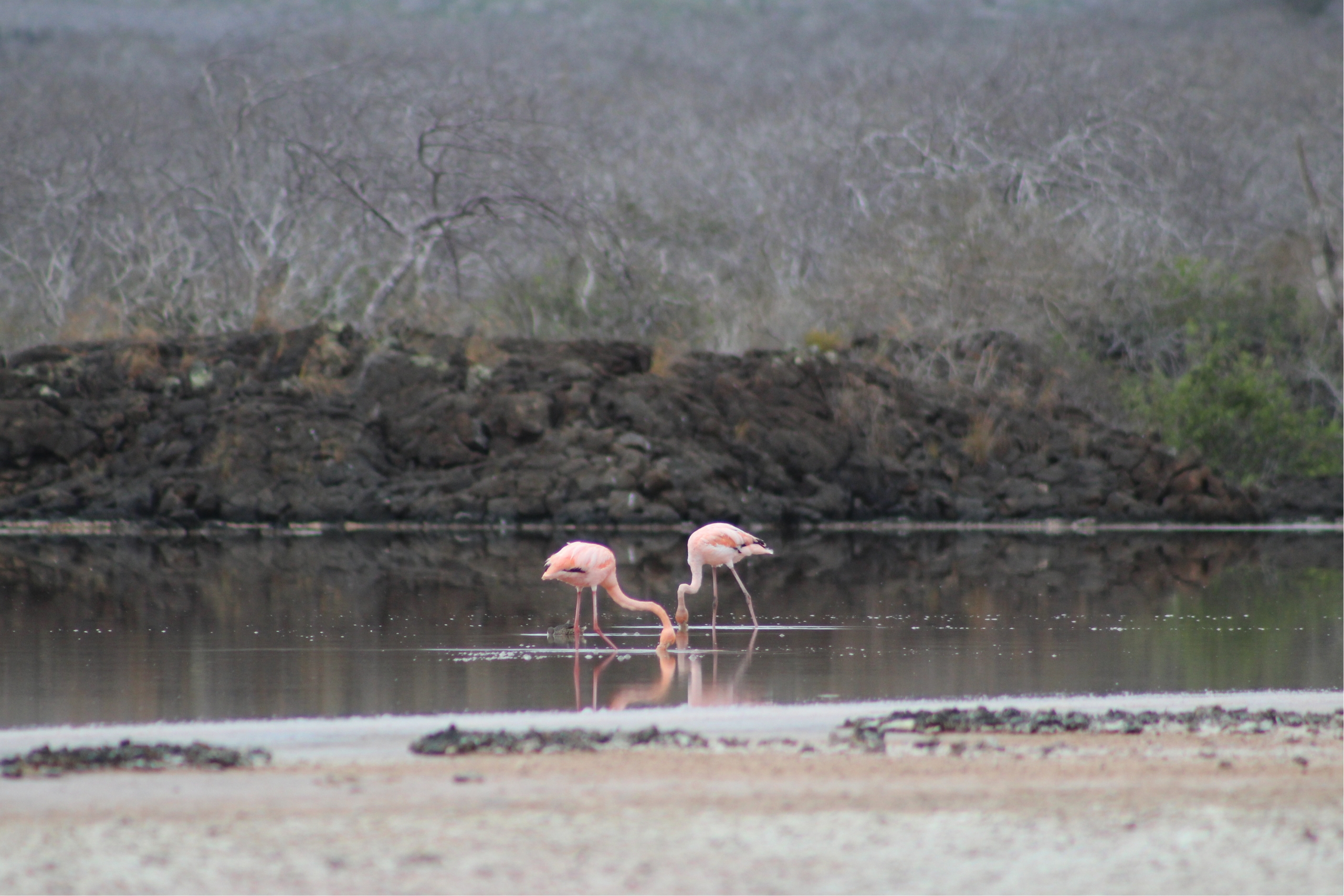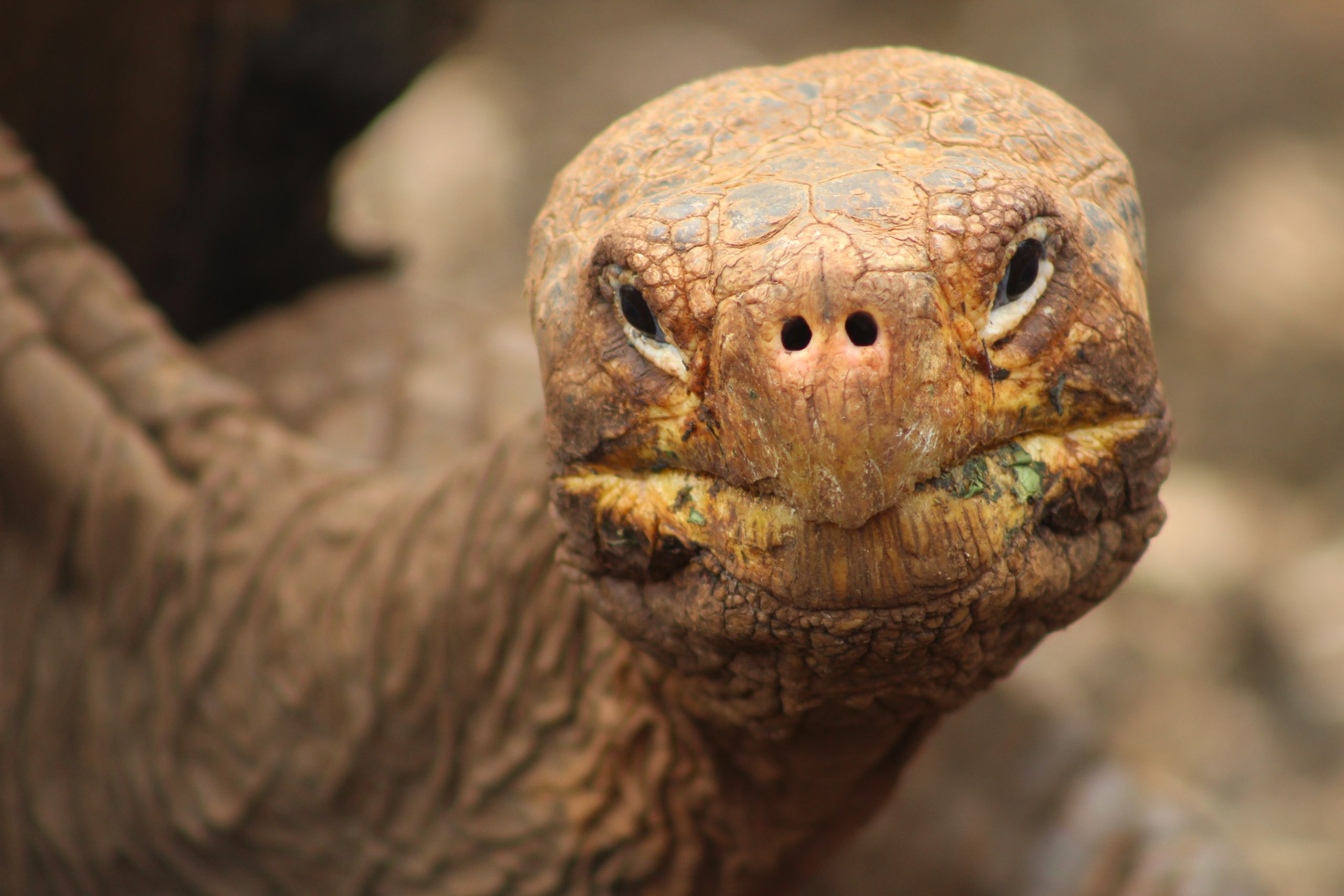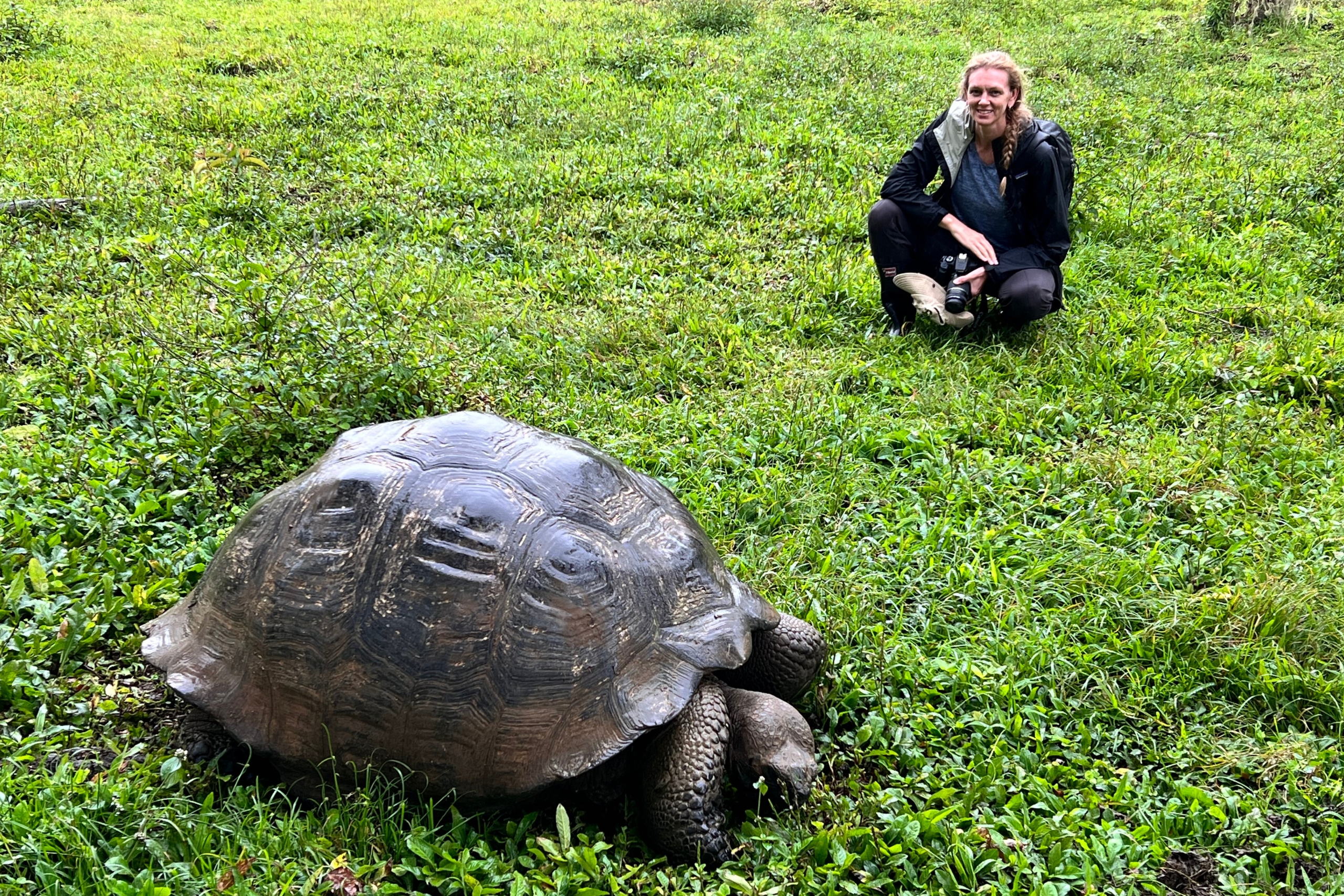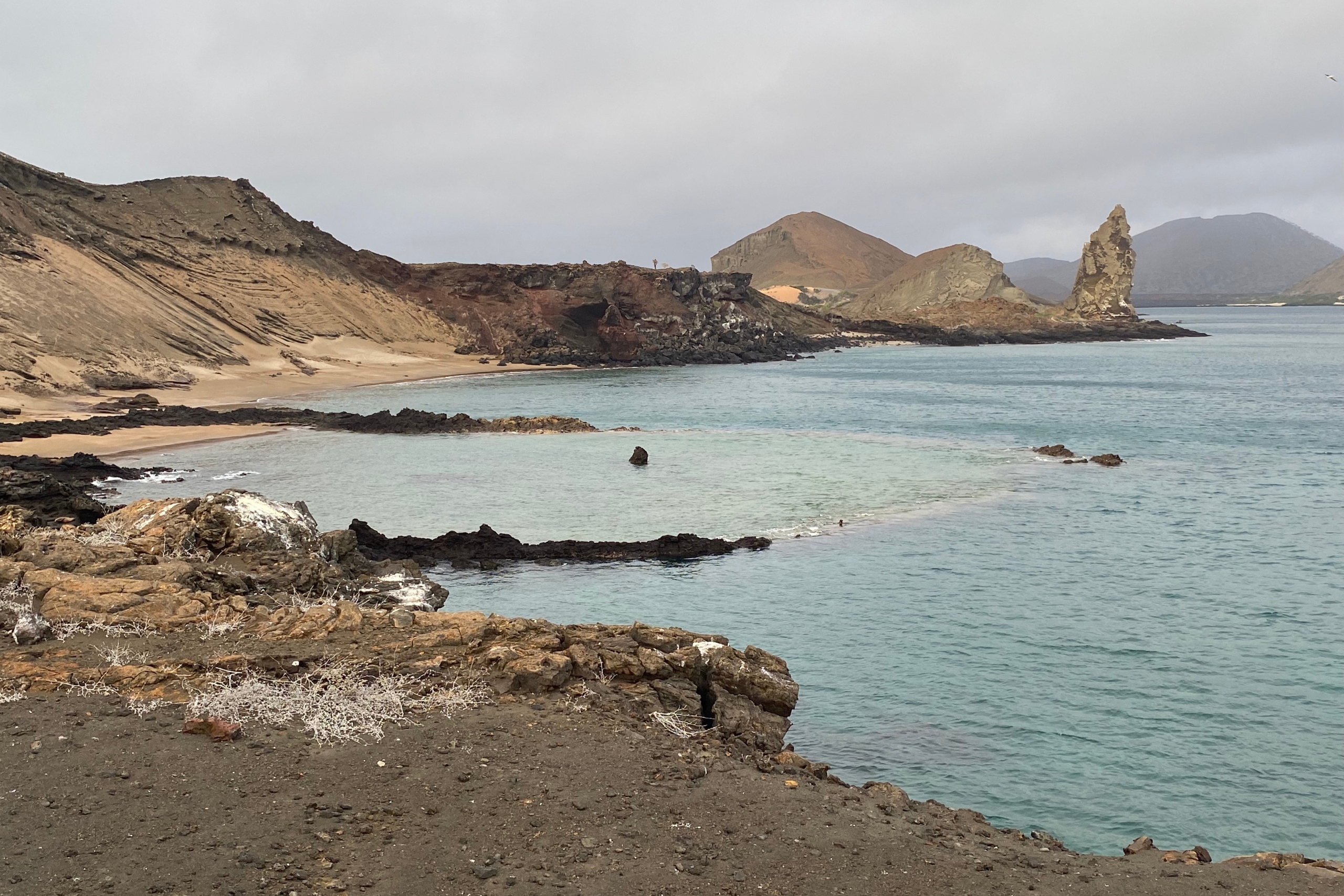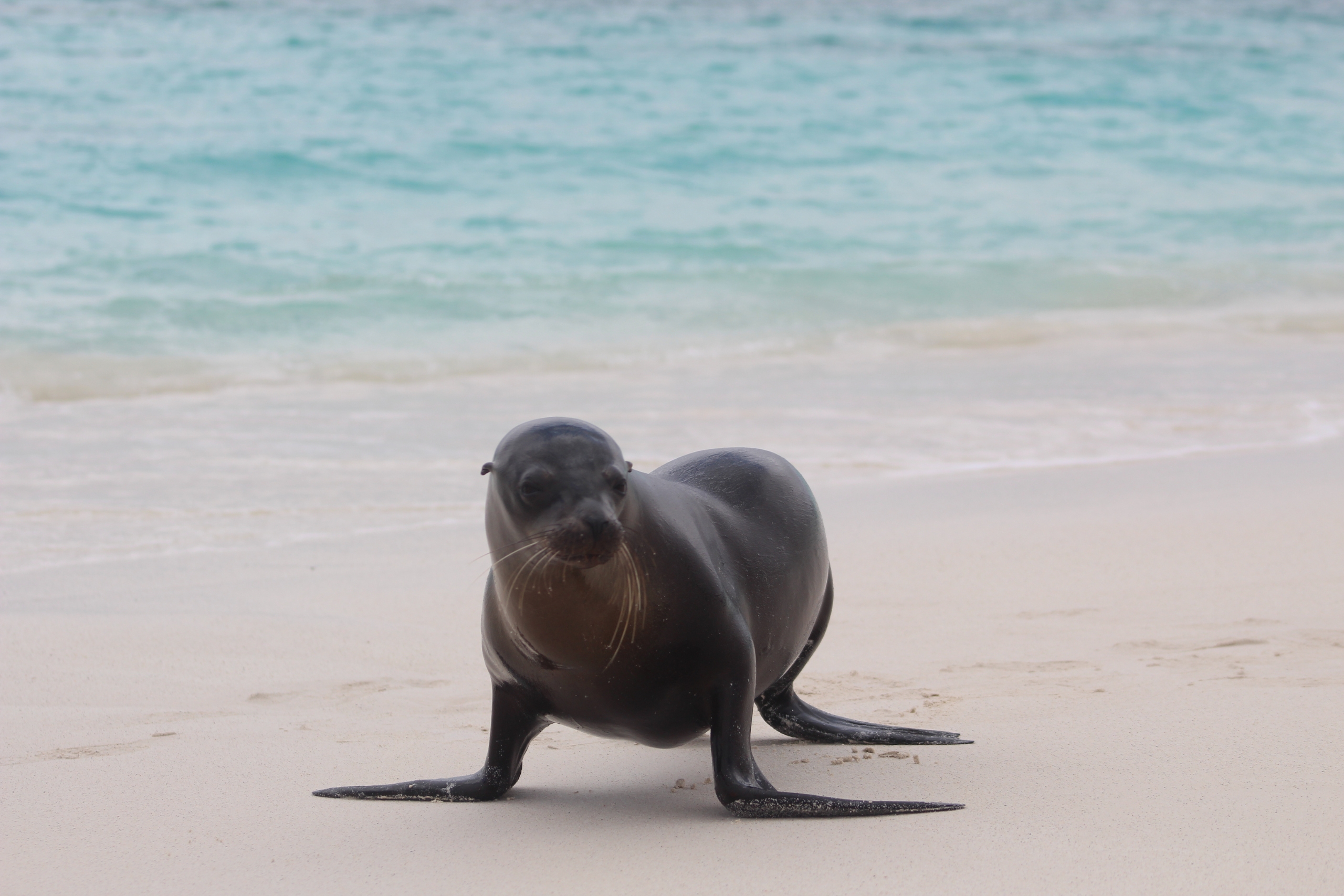Laura Cummings shares once-in-a-lifetime experience as Grosvenor Teacher Fellow
Posted: April 4, 2023
The following is a travel diary by Laura Cummings, a math and science teacher at Sunset Beach Elementary on Oʻahu. She was one of three Hawaiʻi teachers selected for the 2021 Grosvenor Teacher Fellowship. Due to the coronavirus pandemic, Cummings completed the voyage portion of her fellowship in September 2022.
Introduction
During my lunch break at Sunset Beach Elementary in Haleʻiwa in February of 2020, I received a phone call from the National Geographic Society informing me that I was selected for the Grosvenor Teacher Fellowship with National Geographic and Lindblad Expeditions, and that 50 of us from across the country would meet in Washington, D.C. in late March for training and preparation for our research expeditions. My all-expenses-paid expedition was going to be to the Galapagos Islands that summer. I remember how absolutely thrilled and excited I was, but because the official news release had not gone out yet, we were to keep the information confidential. While I wanted to tell everyone about this amazing opportunity, I patiently waited for the news release to be published. Little did I know that the world would shut down due to COVID, and that the news release would not come out for more than a year.
A few trainings were conducted online, and our cohort of 50 amazing educators started connecting via WhatsApp. Even though it was digital, it was still incredible to see and hear stories through photographs and online presentations by all of the fellows. These were the sort of practice activities we did to prepare for storytelling of our expedition locations. We also practiced talking about this professional development to give a quick synopsis to the people we would encounter on our expeditions, and people at home who were interested in learning more or pursuing the opportunity.
After all of the online trainings, emails, postponements, and patiently waiting, Lindblad Expeditions and National Geographic Society felt comfortable sending us out to learn, explore, and bring back incredible experiences to share with our students and communities to inspire curiosity and encourage taking care of our planet. In September 2022, I made my way to Ecuador as one of the fortunate few who get to take in the sights, sounds, smells, and tastes of the “enchanted islands,” the Galapagos Islands.
Approximately 24 hours after I left Honolulu, I arrived in Guayaquil, Ecuador, where I met the only other Grosvenor Teacher Fellow who would be on the ship, and who would be my roommate. Her name was Cheryl Sheffield from Ontario, Canada. Luckily, we had the same goals in mind and the same adventurous spirit to participate in every activity available to us.
San Cristobal
From Guayaquil, we, along with the other guests who would be onboard, flew to San Cristobal Island. Upon arriving, we were welcomed to the beach by an enormous, tired sea lion, and we got our first glimpse of marine iguanas sunning themselves on the dark lava rocks. The Galapagos Islands were formed in very much the same way as the Hawaiian Islands, but they are much newer. As they have evolved, many similarities are evident, but there are also many differences that I immediately started thinking about to connect and engage my students.
After having our shoes and luggage sprayed with something to prevent the introduction of new species to the islands, we split up into groups of about 12 to board the first of many Zodiacs to take us to the National Geographic Endeavour II, which would be our home for the next eight days.
Once somewhat settled in our cabins, we had our first lunch onboard, which was delicious. We then had an orientation and safety drill before setting sail around “Kicker Rock” where the first anchorage of the HMS Beagle occurred with Charles Darwin aboard.
We met our naturalist team, expert photographer, videographer, and spoke with our fellowship mentor and longtime naturalist, Celso. They assured us that we would be treated to something special here in the islands and told us to seek them out whenever we had questions. I brought an extra device that I gave to them and requested that over the course of the expedition, they read and answer some of the questions my students wrote, and they willingly obliged to the delight of my students!
Española
Overnight, we made our way to Española Island. In the early morning, we were able to experience our first “deep water” snorkeling adventure in Gardner Bay. Pre-departure research told me that due to the way multiple currents intersect at the Galapagos islands, the water is filled with nutrients for all sorts of marine life, but also that the water was significantly cooler than in Hawaiʻi. I donned a full wetsuit with booties and a hood and am very glad that I packed those extras to keep me warm. We were treated to encounters with turtles, numerous fish, various corals, and a sea lion whizzing around.
In the afternoon, we boarded another Zodiac which took us to Punta Suarez for a dry landing and a long hike. The rocks we landed on were covered with marine iguanas. While their claws look a little terrifying, these marine iguanas are herbivores who eat algae, and just use their claws for climbing or scraping algae. These are the only lizards in the world who swim in the ocean and the only place they are found in the world is the Galapagos Islands. To expel salt from their bodies, they “sneeze” or blow the salt out from their nostrils from specialized glands so they do not become dehydrated.
Also along the hike, we saw both Nazca boobies and the famous blue-footed boobies. These incredible birds dive at high speed into the ocean to catch prey. I could watch these dive bombers all day! It was fascinating to see. Another highlight was spotting the Waved Albatross. Once again, the Galapagos Islands is the only location on Earth where this species of albatross nests. I was interested in comparing them to the Laysan Albatross, as we take field trips to coastal locations near our school on Oʻahu (such as Kalaeokauna’oa) to see them when they come to mate, lay eggs, and raise their chicks. The other species that was exciting to see was the Galapagos Hawk.
Floreana
We moved north along the archipelago overnight and arrived at Floreana Island. A pre-breakfast walk at Punta Cormorant was offered, and I am glad that I took advantage of the opportunity to walk along green olivine sand and visit a lagoon where flamingos were feeding. These flamingos are genetically different from the flamingos found in the Caribbean. They are smaller and are the most vibrant pink-colored flamingos in the wild due to their diet of crustaceans. We also saw evidence of sea turtle nests on Floreana and saw some interesting vegetation unique to the area.
After breakfast, guests could snorkel or take a glass-bottom boat tour. Opting for snorkeling, I pulled on my mostly dry wetsuit and snorkel masked up. This was one of the most exhilarating snorkeling experiences of my life. A sea lion took particular interest in me and seemingly wanted to play. Blowing bubbles in my face, somersaulting around me in the water, and seemingly posing for my underwater camera, this little guy or girl captured my heart. I didn’t want to leave
The ship repositioned during lunch, and afterwards, we took some kayaks out into Post Office Bay. We admired small and large sea turtles everywhere and spotted colorful Sally Lightfoot Crabs along the coastline. We also went ashore to send stamp-free postcards in the mail barrel. This is an old tradition going back to whaling days when people at sea for months or years at a time would leave letters for their families in a barrel for other whalers to pick up and hand deliver if they were on their way home to a nearby location. Although I didn’t find any postcards to Hawaiʻi, I did pick up one to hand deliver when I visited some family members in Michigan.
Santa Cruz (Puerto Ayora and Highlands)
On this day, we visited one of the most iconic animals of the Galapagos Islands…giant tortoises! As a bit of a science nerd, I appreciated our first stop at the Charles Darwin Research Station (CDRS) and Galapagos National Park Services (GNPS) headquarters. There are so many projects going on related to climate change, which is a big focus in the 6th-grade science class I teach. Tortoises are facing the same challenges as sea turtles with warmer temperatures increasing the ratio of females to males. However, at the research station, they can control the temperature of the eggs to determine their gender.
After visiting the CDRS, we drove up to the highlands of Santa Cruz where there are protected areas for tortoises to roam and forage. To observe them, we put on rubber boots and explored the forest and pasture areas where we found many tortoises munching on vegetation, soaking in mud holes, and leisurely walking about. Watching these enormous and peculiar creatures made me grateful for the conservation efforts after they became so threatened due to human behavior.
Santa Cruz (Cerro Dragon, Guy Fawkes Islets, Borrero Bay, and Daphne Major)
Overnight, we repositioned to the northwestern coast of Santa Cruz. We hiked to Cerro Dragon (or Dragon Hill), to search for the famed land iguanas. This species of iguana was almost annihilated by feral dogs in the 1960s, but the GNPS was able to successfully implement a semi-captive breeding program and get the feral animals under control. We were able to see over 20 of these magnificent creatures and many of their burrows from the hiking trail. This area is also home to giant prickly pear cacti and incense trees.
Later in the day, we went snorkeling offshore Guy Fawkes Islets, once again seeing spectacular underwater and alongshore sights. After a fast turn around hanging up our wetsuits, we got right back out there and went kayaking around Borrero Bay and the northern side of Santa Cruz where we encountered many small reef sharks in shallow waters.
Bartolome
Another before-breakfast excursion day, we hiked up a wooden staircase on Bartolome Island. Part of the way up, we spotted both sea lions and Galapagos penguins in the bay below. At the top, we were rewarded with spectacular views of the volcanic landscape.
After breakfast, we had the option to snorkel or go to the beach. Because there was an opportunity to swim with penguins, I certainly chose the snorkel option. We searched several places before finally spotting a couple of Galapagos penguins on the rocks above us. Just as we were ready to get back on the Zodiacs, they dove into the water and swam around us.
This afternoon, the other Grosvenor Teacher Fellow and I each gave a presentation to the guests onboard and played some Galapagos Trivia we created during our time onboard. By this time, we had become quite close with the naturalists and other guests onboard having shared so many special moments together.
We squeezed back into our still-wet and cold wetsuits to go for an afternoon snorkel near Sombrero Chino. Shorebirds, crabs, and sea lions were on the cliffs and rocks around us, and below, much to my surprise, we found Galapagos sharks, a couple of rays, and many chocolate chip sea stars. This was the only time that I was a bit fearful in the water, but the sharks seemed to have no interest in us.
Genovesa
Our last full day was spent on the island of Genovesa. This is a birder’s paradise. I can’t say that I totally love birds, but I was completely taken by the sounds and sights in this location. When we landed at Prince Phillip’s Steps, we climbed up about 90 feet to hike along a trail where we saw the beautiful red-footed booby birds, frigates, Nazca boobies, marine iguanas, and even an owl.
In the afternoon, we had a wet landing on a white, coralline beach at Darwin Bay. Many sea lions were basking on the sand, unperturbed by our arrival. As we started walking the loop trail, the call of various birds echoed off the cliffs. Red-footed boobies perched in low trees around us, Nazca boobies peered at us with their yellow eyes, and male frigates with red-throat pouches circled overhead. The sun was setting as we rode back to the ship on the Zodiacs. We made it back just in time to change and make it to the Captain’s Farewell Toast in the ship’s lounge.
Baltra
We did not get to explore much of Baltra, but we were bid farewell by some barking sea lions and saw some diving boobies having breakfast. Before boarding our planes, many of the guests traded contact information, invited each other to visit, and reminisced about this incredible experience we were able to share together.
Taking what I learned back to the classroom
I have used the knowledge I gained to significantly improve my climate change unit as well as build global awareness and global competencies (for my students, myself, and fellow educators). I have also used what I’ve learned to reach out to the community and provide opportunities for climate connections. As a Hawaiʻi Climate Fellow with the National Oceanic and Atmospheric Administration, we host monthly online Climate Chats and host an online community of practice on the What School Could Be platform (Please join us).
Learning about temperature impacting the gender of Galapagos tortoises and sea turtles there inspired me to host a Climate Chat with NOAA Marine Biologist Dr. Camryn Allen about honu in Hawaiʻi and how there is habitat loss due to rising sea levels and more intense storms, as well as temperature rise leading to a higher ratio of females to males. This also led to an in-person meet up at Laniakea Beach with Debbie Herrara from the organization Malama na Honu. Educators and students were able to gain more information about honu and classroom activities. NOAA scientists were also there to show us how to participate in the citizen science opportunity, Honu Count Sighting Survey, and they etched turtle carapaces and showed us how to check for chips inserted in the turtles to collect turtle behavior data (such as migratory patterns and where they go to nest).
As I reflect on my learning and experiences, I continue to develop more ideas to incorporate into lessons. For example, when we talk about evolution and Charles Darwin, I’ll be able to show pictures of Darwin’s actual experiences in the early 1830s that led to The Voyage of the Beagle and The Origin of Species, as well as Galapagos mockingbirds and finches that were observed to show how beaks evolved based on the birds’ needs and survival on various Galapagos Islands. I also see many ways to connect activities that compare and contrast species seen in the Galapagos Islands and the Hawaiian Islands. (Layson Albatross versus Waved Albatross, Hawaiian green sea turtles and Galapagos green turtles, monk seals, and sea lions, and much of the vegetation.)
I will be able to create earth science lessons to show the similarities of both of the island chains being formed, and opportunities to imagine what the Hawaiian Islands looked like many years ago, as the Galapagos Islands are much younger than the Hawaiian Islands. This professional development opportunity has had a major impact on my teaching and students’ learning this school year, and for the rest of my teaching career.
This experience was magical and unforgettable. The geology, wildlife, and people truly are enchanting and I hope that my pictures, lessons, and storytelling will convey a little bit of that enchantment to my students and community.
The fellowship application opens every fall. I highly recommend looking into it if you want to incorporate the attitudes, skills, and knowledge of an explorer into your classroom or informal education setting.

